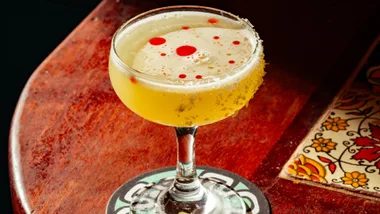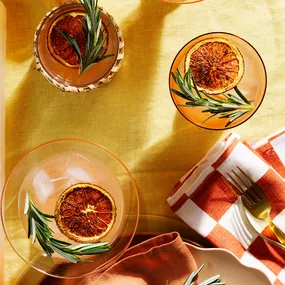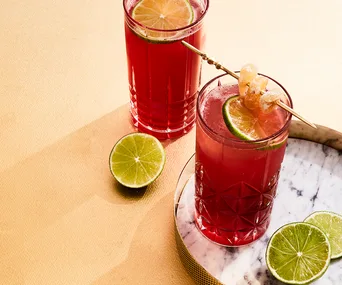In George III’s Great Britain, punch was the king of recreational tipples. Gentlemen drank it. Ladies drank it. Soldiers, thieves and beggars drank it. Samuel Johnson, James Boswell, Robert Burns and Georgiana Cavendish, Duchess of Devonshire, drank it.
There were, of course, a few who did not. Indeed, there were some sober and sharp-nosed parties who held that drinking punch was sure to set one on the crooked path to Botany Bay. Perhaps. But should it have been your grim fate to travel that path, you most certainly would have been conveyed to the Antipodes by Royal Navy sailors issued with a daily ration of rum punch, and eventually you would have arrived at a place where everyone indulged. Save the natives, who, wrote author James Hingston Tuckey, “would taste and spit out again” punch when it was offered them.
But while pretty much every convict and guard drank deeply of the cheap, nasty rum with which the colony was awash (“nearly all the men and almost all the women were addicted to alcohol,” Robert Hughes wrote inThe Fatal Shore), the high prices of the other ingredients necessary for punch made it for most a drink only for special occasions. To us in the 21st century, that seems just what punch’s role should be: a big bowl of mixed alcohol with which to celebrate a wedding, commemorate an anniversary, or toast an extraordinary achievement. But it was not always thus.
In the early 1600s, when English sailors on the East India run first learned to mix distilled spirits with lemon, lime or sour orange juice, sugar, water and spices, this “punch”, as they called it (there are several explanations for the name, none of them provable), was a way of providing themselves with something palatable and not too intoxicating that could be made from items that didn’t spoil and were easily procurable in the tropics. Before long these same sailors had spread the new invention to the British colonies in the West Indies and then to England itself. That was the beginning of the great age of punch. It ended with Queen Victoria, who frowned on booziness and louche, unproductive behaviour. And in between, whenever two or more Englishmen, Scotsmen, Irishmen, Americans or Australians sat down together, there was likely a bowl of punch at hand.
It didn’t take long for the simple, original sailors’ formula to evolve; for the original Indian and Indonesian arrack that fuelled the mixture to be joined by Caribbean rum, French brandy, Celtic whiskey and even humble English gin, and for early mixologists to include various wines, fruits, teas and anything from milk and eggs to calf’s foot gelatine. By the standards of the day, therefore, the signature punch recipe of Thomas Davey, lieutenant governor of Van Diemen’s Land, was a fairly conservative, though from all accounts lethal, concoction.
When Davey took office in 1813, Sydney could boast of regular punch-houses similar to those in Britain, and it wasn’t long before Hobart had its own establishments like the Ship tavern, where, as one Englishman opined in 1833, “the rum punch… would fearlessly challenge competition with the preparation of the most curious compounder at home.”
When Davey wanted to hold session, he would erect a wattle hut out in the bush where he would sit behind a stout table bearing a barbecued pig and, at his right hand, a cask of his signature punch – a simple, but dangerously pleasing mix of rum, brandy, porter, citrus, sugar and water that he called “Blow My Skull”. When a petitioner approached, he would receive a large tumbler of the stuff, and he and Davey would drink. “The governor, having an impenetrable cranium, and an iron frame,” wrote politician Edward Abbott, “could take several goblets of the alcoholic fluid, and walk away as lithe and happy as possible.” His petitioners were seldom so fortunate.
By 1864, when Abbott published Davey’s recipe in Australia’s first cookbook,The English and Australian Cookery Book, even the strongest punch would have seemed mild and old-fashioned to the up-to-date Australian drinker. Australia, you see, had discovered the American cocktail, a drink that used all the liquor in punch but none of the mitigating water. This means that today the social drinker can drink Blow My Skull without fear of a head explosion, while a classic rum punch will seem positively ambrosial.
David Wondrich’sPunch: The Delights (and Dangers) of the Flowing Bowlis published by Perigee Books.
Punch, the precursor to the cocktail, once held the world in thrall, from London society to the wilds of colonial Australia, writes David Wondrich.
Ingredients
Method
Main
Note This recipe is adapted from Thomas Davey’s recipe as published in Edward Abbott’s The English and Australian Cookery Book. Davey served the punch in pint mugs, but this is one occasion where history may and probably should be ignored.
Notes










